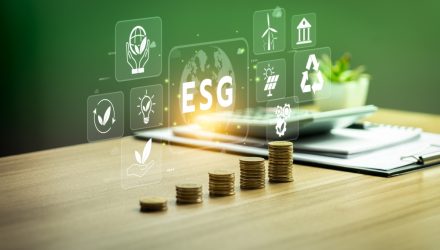ESG investing was one of the hot-button topics of 2022, with a rise in anti-ESG sentiment gaining more vocal representation midyear. While ESG investing may have become a partisan issue to some, the reality is that there is already a transition happening within companies and across industries as emissions become a real focus and the world moves towards net zero by 2050.
KraneShares offers a suite of ETFs focused on the climate transition already underway that will allow advisors to position their portfolios to capture the investment opportunities within the transition to net zero.
KraneShares’ carbon allowances suite of funds includes the KraneShares Global Carbon Strategy ETF (KRBN), an ETF that invests in carbon allowances futures globally from the EU, California, RGGI, and the U.K.; the more targeted KraneShares European Carbon Allowance Strategy ETF (KEUA); and the KraneShares California Carbon Allowance Strategy ETF (KCCA). The KraneShares Global Carbon Offset Strategy ETF (KSET) is the first U.S.-listed ETF offering investors exposure to the voluntary carbon markets.
For an approach that targets transitioning companies, the KraneShares Global Carbon Transformation ETF (KGHG) seeks to capture the true potential within the carbon transition by focusing on companies from industries that are traditionally some of the highest emission offenders but are on the precipice of transitioning to renewable technologies.
Meanwhile, the KraneShares Electrification Metals ETF (KMET) offers targeted exposure to the metals that will be necessary for the electrification and clean energy transition of the world’s economy in the pivot to net-zero emissions, and the KraneShares Electric Vehicles and Future Mobility ETF (KARS) invests across the EV ecosystem to capture the growth in batteries, hydrogen fuel cell manufacturing, EV production, and more.
Beyond ESG: Impact Investing With KraneShares
The strategies of the funds go beyond ESG and instead align more with impact investing according to Luke Oliver, managing director, head of climate investments, and head of strategy at KraneShares, in a recent paper.
“Each of these strategies stands on a structurally bullish investment thesis that we believe to be universally compelling to investors, ESG or otherwise,” wrote Oliver. “Intuitively, impact and ESG investors will be particularly drawn to these solutions, though we should note that many of our investors are attracted to the diversification and potentially asymmetric return profiles of these market exposures.”
The opportunities for investors within the climate suite will allow for advisors to align their portfolios with decarbonization efforts while also focusing on return expectations. The suite has the chance to outperform in the impending climate capital cycle. (see also: The Biggest Short Squeeze in History’: Carbon Mispricing)
Carbon allowance markets with their focus purely on driving emissions reductions through increasing costs to polluting companies are arguably one of the most direct and pure impact investment plays available currently compared to other asset classes. Continued investment into allowances helps add to price discovery for carbon allowances, creating upward price pressures on companies to change their business models to be more emissions efficient while also investing in green technologies and innovations.
KGHG is a fund at a glance that seems inherently anti-ESG with its exposure to some of the worst offending industries for emissions, but KraneShares firmly believes that to drive the greatest change and met net-zero global goals, these industries will be vital. The companies the fund invests in are considered leaders in their industry for decarbonization efforts, positioning that could benefit them greatly in the new climate capital cycle.
Mining and metals remain an area of complexity for ESG investing, with human rights issues and the high polluting energy demands of mining itself making it an area to avoid for most. However, many metals are integral components of renewable energy technologies and will play key roles in the electrification of the world to come. KraneShares believes that participation in price discovery in the metals market will help to encourage movement away from problematic practices and policies while helping to innovate and guarantee both supply and scaling.
“Carbon markets, compliance, and offsets, are positioned to move into a tighter supply/demand environment, transition equities could emerge from value to growth, and critical metals could see outsized demand for decades to come,” Oliver wrote. “Due to these structural tailwinds, these investments could be counter-cyclical in risk-off or bear markets and be boosted by risk-on bull markets.”
For more news, information, and analysis, visit the Climate Insights Channel.

